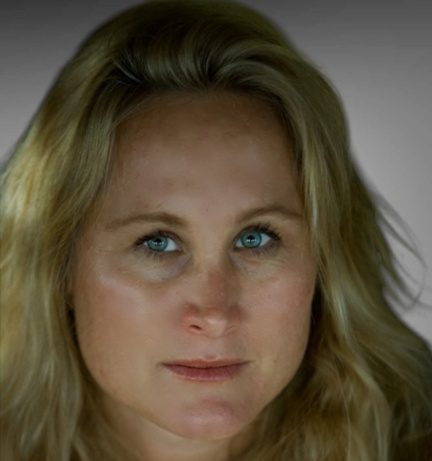HEAT
HOW TO SURVIVE THESE HEATWAVES
Protect yourself from heatstroke + dehydration
Climate change is here. On Earth’s hottest days, we’ve already surpassed the global warming threshold of 1.5°C, and it’s bound to get worse. Already, an estimated 500,000 people die a year from extreme heat. That’s why it’s crucial for elderly people, parents of small children, and those with medical conditions to know the signs of heatstroke and dehydration.
1. Stay Informed & Plan Ahead
The first step in surviving a heatwave is stay on top of local weather forecasts and warnings. We used to worry about getting caught in the rain – but in the 2020s, the opposite is true. It’s the heat you should be scared of. Your local news channel will issue advisories when brutal heatwaves are coming. That’s the time to make sure you have a strategy for cooling down your living space: blackout curtains, fans, air conditioners or swamp coolers, bags of ice, and a stockpile of water. If there’s rolling blackouts or the AC just can’t keep up, make sure you know where the nearest cooling center is.
2. Stay Inside & Keep Cool
During a heatwave, staying indoors during the hottest part of the day – typically late morning to mid-afternoon – can be life-saving. If you have AC, use it efficiently by keeping windows and doors closed to prevent cool air from escaping. If you don’t, use fans and open windows in the early morning and late evening when it’s cooler. It’s also worth investing in blinds or blackout curtains to block out sunlight.
Try cooling off with cold baths or showers, damp towels, and by sticking wet t-shirts in your freezer then wearing them to sleep. All these things will help regulate your body temperature. You can even make your own swamp cooler. Just take a large plastic storage bin or a cooler, a fan, PVC pipes for air flow, a water reservoir, and a piece of cardboard with a fine mesh or a specialized evaporative cooling pad. Cut holes in the container for air intake, install the fan on one side to push air through the water-soaked cooling pad, and use PVC pipes to direct the cooled air out of the container.
If your home get too hot, take advantage of pubic air-conditioned public spaces like movie theaters, libraries, malls, or cooling centers. According to most research, temperatures of 104°-120°F are generally “too hot” for people, meaning the human body may struggle to regulate its temperature and fall prone to heat exhaustion or heat stroke. However, what temperatures we can withstand vary depending on humidity levels and individual health factors.
3. Hydrate
Staying hydrated is probably the most critical step in surviving a heatwave. As temperatures rise, your body loses water and electrolytes a lot faster, so you have to drink plenty of water throughout the day even if you don’t feel thirsty. If you go out in the heat, bring a refillable water bottle. Avoid beverages that dehydrate you, such as those containing caffeine or alcohol. Electrolyte-filled drinks like Gatorade and coconut water are very helpful, particularly if you’re sweating heavily; they replenish the salts and minerals your body is losing.
4. Wear Appropriate Clothing
Light-colored, loose-fitting clothing made of breathable fabrics like cotton or linen can make a huge difference in helping you cope with heat. They allow sweat to evaporate more easily, helping your body stay cool. Avoid dark colors, which absorb more heat, and wear wide-brimmed hats or umbrellas if you need to be outside. Footwear is also important. Sandals or shoes that allow your feet to breathe can prevent overheating. Stock up on supplies like sunscreen, fans, and ice packs before heatwaves.
5. Timing Is Everything If You Go Out
If you need to be outside during a heatwave, try to adjust your schedule to avoid the hottest hours of the day. Early morning and late evening are typically the coolest times. Forgo strenuous activities like exercise or yard work, which increase your body’s internal heat. If you must work out, take frequent breaks in shaded areas, and drink plenty of water. If you work outside and can’t avoid heat exposure, wear protective clothing and hats, and take regular, legally-mandated breaks. There are organizations like the Workers’ Defense Project that can help inform you about your legal rights. Also, putting a damp cloth on your neck and wrists shouldhelp cool your body down quickly.
6. Recognize Heat-Related Illness
The symptoms of heat exhaustion include heavy sweating, weakness, dizziness, nausea, and muscle cramps. If you’re experiencing any of these, immediately move to a cooler place, drink water, and rest. Heatstroke is more serious and requires immediate medical attention. Symptoms include a fever of 103°F or higher, confusion, an elevated pulse, and even loss of consciousness. If you suspect you have heatstroke, call 911 and get to a cool environment, apply cold compresses, and sit in front of a fan if possible.
During heatwaves, it’s very important to check on elderly relatives and neighbors, people living on the streets, and those with chronic medical conditions. They may be more susceptible to heat-related illness and have difficulty adjusting to temperature extremes. As we experience longer, hotter heatwaves, it’s essential to have a personal plan in place to protect yourself during the relentless summer heat.



